Table of Contents
As pointed out above (in Section Two), symmetrical patterns can be transformed by stretchings and other deformations. These are transformations in Loeb's sense. Grünebaum and Shephard discuss the same topic in terms of “homeomorphism” and consider isometry to be a special case of homeomorphism. As they allow any figure to be stretched or compressed in any way, “uniformly or non-uniformly”, and remain homeomorphic with the original, I find this classification of isometry meaningless.1
Grünbaum and Shephard proceed, however, to a meaningful discussion of homeomorphism (which they also call “topological transformation”, a meaningless term in this context), in which they make clear that its critical characteristic is that it preserves the relationships among parts:
Wheras an isometry is a transformation which preserves properties like straightness, angles between lines, and area, homeomorphisms need not preserve any of these. On the other hand, the application of a homeomorphism to a tiling preserves the valences of the vertices [the number of lines meeting at a vertex] and the number of adjacents and neighbors of each tile.
This view need not be limited to symmetrical or even regular patterns, but it is tilings that they discuss.2
The transformations of interest to me involve regular stretching or compression of already symmetrical figures. At the most complex, such transformations can be seen, for example, in the previously mentioned geometric ceiling mosaics of the ambulatory of the Church of Santa Costanza in Rome, which are two-dimensional patterns warped into three dimensions both across the cross-sectional curve of the vault and also along the circular curve of the vault in plan. But I am content to stick to two dimensions. I am also content to omit mathematical specification of the distortion of figures that appear to be distorted in some regular way.
First I want to dispose of a side issue. Symmetrical patterns can be distorted in irregular ways. The the ends of the ribs of the hood of the portal of the Mosque of al-Aqmar, Cairo, 519/1125, where they are aligned along a straight line, form a pattern that can be considered either (considering only the outline of the rib-ends) a one-color, “one-dimensional pattern” with symmetries of translation, glide reflection, rotation, and reflection, classified as p1a13 or (considering both the solid ends of the ribs and the voids of the scallops between them, and distinguishing between solid and void), a two-color, “one-dimensional pattern”, with all the same symmetries except glide reflection, in which case it can be classified as p112'.4 (For Washburn and Crowe's definition of “one-dimensional patterns” see p. 15; obviously the pattern is developed in two dimensions.) But where the hood curves there is strictly speaking no symmetry at all except perhaps very locally: the curving of the pattern compresses the shapes of the voids (if the rib profiles are not also compressed). Yet the mind forgives this sort of irregularity and sees (especially) the glide reflection symmetry of the pattern as continuous. One might call this a “warped one-dimensional pattern”, which is distorted by bending its long axis of symmetry.
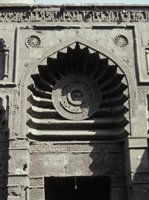
Figure 1. Mosque of al-Aqmar, Cairo, 519/1125, upper central part of portal.
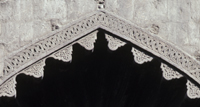
Figure 2. Mosque of al-Aqmar, Cairo, 519/1125, detail of portal arch pattern.
More interesting than irregular distortion is the transformation of a symmetrical pattern is a regular fashion. This kind of transformation occurs in the example above from the Masjid Bāb al-Aḥmar in Aleppo, which involves a pattern laid out on an underlying lattice that I treated as though it had been completely regularly spaced; in fact the lattice underlying the real design is compressed vertically. As with the introduction of interlacing, this departure from full regularity makes the pattern more complex while potentially reducing its symmetry.
The same sort of transformation occurs in flat arches. Before explaining it some introduction is required.
The voussoirs of an ordinary arch, viewed in elevation, are usually cut so that each joint is perpendicular to a line tangent to the curve of the arch. For an arch that is a segment of a circle, the lines of the voussoir joints, if extended, would meet at the center of the circle used to lay out the arch. In the case of multicentered arches the lines of the joints would meet at the centers of the multiple circles used to lay out the arch. Another way of thinking of this relationship between the voussoirs and centers of circles is that the voussoirs are portions of wedge-shaped segments of the circle, the sides of which radiate from the center.
In the case of a flat arch there are two main possibilities for laying out the voussoirs. The first and overwhelming favorite is to use the same approach as for a curved arch, so that the voussoirs are portions of wedge-shaped segments of a circle. In this case the voussoirs are wider at the top than at the bottom and their joints slant more steeply at the outer sides of the arch than toward the center. The second is to form the voussoirs as trapezoids with joints running parallel to each other and no relationship to a circle at all.5
The first approach can be seen in the lintel of the North Gate of the city wall of Ruṣāfah (sixth century A.D.). Here the joints between these voussoirs either converge on a single point, which means that they are sections of wedge-shaped segments of a circle centered on that point. The set of voussoirs as a whole has symmetry of reflection with respect to the central vertical axis, and the set of wedge-shaped segments, if they really existed (and were laid out with equal angles, which they may not have been), would have symmetry of rotation; one could characterize the set of voussoirs as having “symmetry of rotation with cropping”.

Figure 3. Ruṣāfah, city wall, north gate, sixth century A.D. detail of lintel.
In the case of joggled voussoirs, as in the Bāb al-Futūḥ, Cairo, of 480/1087, there is an additional wrinkle: the joggles are in line horizontally, without respect for their distance from the center of the circle at which the radial joints of the voussoirs would meet if prolonged. The shapes of these voussoirs can be seen (and the joggling encourages this perception) as distorted by stretching their outer upper corners progressively toward the outside of the flat arch. The arch might be said to have “symmetry of translation with radial distortion”, and if one wanted to carry the topic further one might find a relationship to regular patterns distorted spherically.
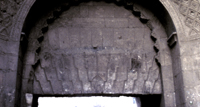
Figure 4. Bāb al-Futūḥ, Cairo, 480/1087 detail of lintel.
I believe the joggled voussoirs of one of the north doors Mosque of al-Ṣāliḥ Ṭalā'iʿ, Cairo, 555/1160, can be considered in the same class.

Figure 5. Mosque of al-Ṣāliḥ Ṭalā'iʿ, Cairo, 555/1160, detail of voussoirs on north side.
The barbican of the Aleppo Citadel, 913/1507, shows a simple version of the commonest Mamlūk development of the idea of joggled voussoirs. 6 Here all the “voussoirs”, which are only veneer, except for the central and outermost ones are the same shape; lines drawn down their centers (however defined) would not meet at a single point, but cross at a series of points located along the central vertical axis (with allowance made for sloppy workmanship). This arrangement cooresponds to the second method of laying out the voussoirs of a flat arch described above, and in the Mamlūk period it is quite common in horizontal bands of decoration. Again, there is no distortion at all; the pattern has symmetry of reflection with respect to its central vertical axis, and each half is a two-color one-dimensional pattern with symmetry of translation and no symmetry of rotation. 7

Figure 6. Barbican of the Aleppo Citadel, 913/1507, detail.
Things appear deceptively more complicated when the flat arch has a curved lower edge. A thorough study of such arches might produce interesting results; here I give examples only from Mamlūk Cairo. In brief, all these examples probably follow the first method of layout, producing symmetry of rotation with cropping. The flat upper edge of the arch is irrelevant, and the arches should not be classified as flat: the voussoirs in any set are variations on figures cropped from wedge-shaped segments and laid out along the curved lower edge; all their complexity is displayed in the shortest pair and the keystone, and the edges of the outer voussoirs are simply extended in a straight line to meet the flat upper edge of the arch.
My results are uncertain not only because I have worked from photographs rather than measured drawings, but also because there is a rather obvious inaccuracy in realizing a complex design. It appears that a template was made for a given profile and traced and retraced as the veneer voussoirs were fabricated (just how this was done while ensuring a tight fit is an interesting question). There is often much variation in width among the voussoirs, showing that the template was used to replicate a curved line rather than a two-dimensional figure. In greater detail, then:
In the portal of the Madrasah and Khānaqāh of al-Zāhir Barqūq in Cairo, 786–88/1384–86,8 there are two sets of veneer voussoirs. Ignoring differences in width as not intended to be part of the pattern, both sets have symmetry of reflection with respect to their vertical axis. In the upper set, the central eleven voussoirs (in the lower set, the central nine) are divided into a central shape and two sets of shapes that are mirror images of each other. Within each of these sets the shapes are similar to each other but do not have symmetry of translation.
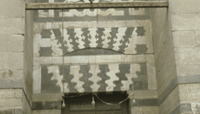
Figure 7. Madrasah and Khānaqāh of al-Zāhir Barqūq, Cairo, detail of portal.
The members of the upper set, which has a curved lower edge and is not therefore a flat arch, share the same profile though not, as noted, the same widths. By superimposing one image of the set on another and shifting it one voussoir at a time, I concluded that the profile is not distorted. Measurement suggests the same result: for example, the outer points of all the central trefoil shapes are the same distance from the lower edge of the arch. As the voussoirs are wider at a given distance from the bottom than at the bottom itself, they are probably developed from wedge-shaped segments. So the voussoirs are not distorted like the simpler joggled voussoirs discussed above, but are extended to meet (or are cropped by) the top edge of the arch.
In the lower set, which is a flat arch, there seems to be enough irregularity that I cannot be sure the profiles are distorted, but I think that was the intention. If one follows a given lobe of the profile across the set of voussoirs it seems to rise and fall, as though the voussoirs were sitting on a curved arch below the actual lower edge of the arch. But there also seems to be some distortion. If so, this is yet a different case than those described above, and it would exhibit “symmetry of rotation with (some) radial distortion and cropping”. As for the wedge-shaped segments from which the voussoir shapes are developed, it seems easier to approximate the centers from which they radiate. I believe there are two such centers, corresponding to the two centers of an imaginary two-centered arch.
Returning to the upper set of voussoirs, while it is difficult to be sure just what the line of the lower edge is, it was probably intended to be a two-centered arch. That is, the voussoirs sit on this arch and extend upward to a horizontal line. In the lower set, the corresponding two-centered arch is imaginary, so that they can be imagined as identical shapes cropped by the horizontal lower edge of the arch as well as its horizontal upper edge.
In the portal of the Madrasah of al-Ashraf Barsbāy in Cairo, of 826–33/1423–309 the lower edge of the arch is apparently two-centered but the veneer voussoirs do not seem to be cut with sufficient precision to be sure that they stem from wedge-shaped segments. They may have been laid out by eye.
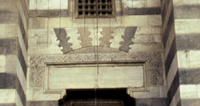
Figure 8. Madrasah of al-Ashraf Barsbāy, Cairo, 826–33/1423–30 detail of lintel.
In the portal of the Madrash and Mausoleum of al-Ashraf Qaytbāy in Cairo, of 874–79/1470–74 10 the voussoirs are quite accurately cut to the same profiles, at least as a group: superimposing a reversed image of them produces a close correspondence. But merely shifting a superimposed image by one voussoir (which I think should show significant results despite the distortion introduced by the sharp angle of my photograph to the plane of the arch) does not produce a close match. Here perhaps the profile was artistically stretched from one voussoir to the next in a drawing of a half-arch that was mirrored to form a template for the entire arch, instead of taking a single rendering of the profile as a template for every voussoir.
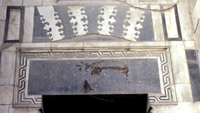
Figure 9. Madrash and Mausoleum of al-Ashraf Qaytbāy, Cairo, 874–79/1470–74, detail of portal.
In the cases of the Mosque of Ganībak al-Ashrafī in Cairo, of 830–31/1427–28, and the Maqʿad of al-Ashraf Qānṣūh al-Ghaurī in Cairo, of 910/150411 the voussoirs seem to share very similar profiles; I illustrate the Mosque of Aṣlam al-Silāḥdār in Cairo, of 745–46/1344–45, and the Sabīl-Kuttāb of al-Ashraf Qaytbāy beneath the Citadel of Cairo, of 884/1479–80,12 as examples of how complex these profiles can become. While photogrammetric methods might be needed to verify that my earlier conclusions hold for these examples, I think that in all these cases the ideal design was the first method of layout described above: the profiles are not distorted, the voussoirs sit on a two-centered arch, all the complexity of the profile appears in the shortest voussoirs, and the others are simply extended to the upper edge of the arch. In addition to the symmetry of reflection along the central axis of the entire arch, each side has symmetry of rotation with cropping.
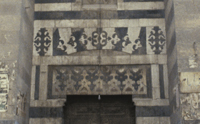
Figure 10. Mosque of Ganībak al-Ashrafī, Cairo, 830–31/1427–28, detail of portal.

Figure 11. Maqʿad of al-Ashraf Qānṣūh al-Ghaurī, Cairo, 910/1504, detail of portal.

Figure 12. Mosque of Aṣlam al-Silāḥdār, Cairo, 745–46/1344–45, detail of lintel.
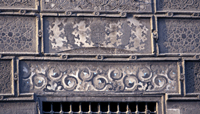
Figure 13. Sabīl-Kuttāb of al-Ashraf Qaytbāy beneath the Citadel of Cairo, 884/1479–80, detail of voussoirs of one of the sabīl windows.
1. Op. cit., p. 166. In the relevant paragraph they start by considering a “geometric figure” but do not require it to be regular, so this restriction is irrelevant.
2. The succeeding chapter (ch. 5) covers a small subset of patterns, restricted by definition: a monomotif pattern is a set of regular repetitions of a motif, which in turn is a “non-empty plane set”—that is, anything (p. 204). For their view of the place of this discussion in the literature see pp. 261–66. They consider patterns nobody has ever invented and aside from a passing reference do not consider patterns in art. This leads to a taxonomy of “pattern types”, pp. 282–93 for a certain class of tilings, which may interest some readers.
3. Washburn and Crowe, op. cit., p. 83, answering the questions no, yes, and no.
4. Washburn and Crowe, op. cit., pp. 84–85, answering the questions yes, no, no, and no.
5. I do not seem to have an illustration of this method to hand. The Church of the Nativity in Bethlehem may have such a flat arch, if a drawing reproduced by K. A. C. Creswell is correct (Early Muslim Architecture, 2 v., Oxford, 1932–40; v. 1 revised and published in 2 parts, 1969, pt. 2, fig. 590).
6. Meinecke, op. cit., v. 2, p. 455.
7. Classifiable as p'111: Washburn and Crowe, op. cit., p. 84–85, answering the questions no, no, no, no, and yes.
8. Meinecke, op. cit., v. 1, pp. 269–70.
9. Meinecke, op. cit., v. 2, p. 337.
10. Meinecke, op. cit., v. 2, p. 399.
11. Meinecke, op. cit., v. 2, pp. 344 and 455.
12. Meinecke, op. cit., v. 2, pp. 201 and 418–19.